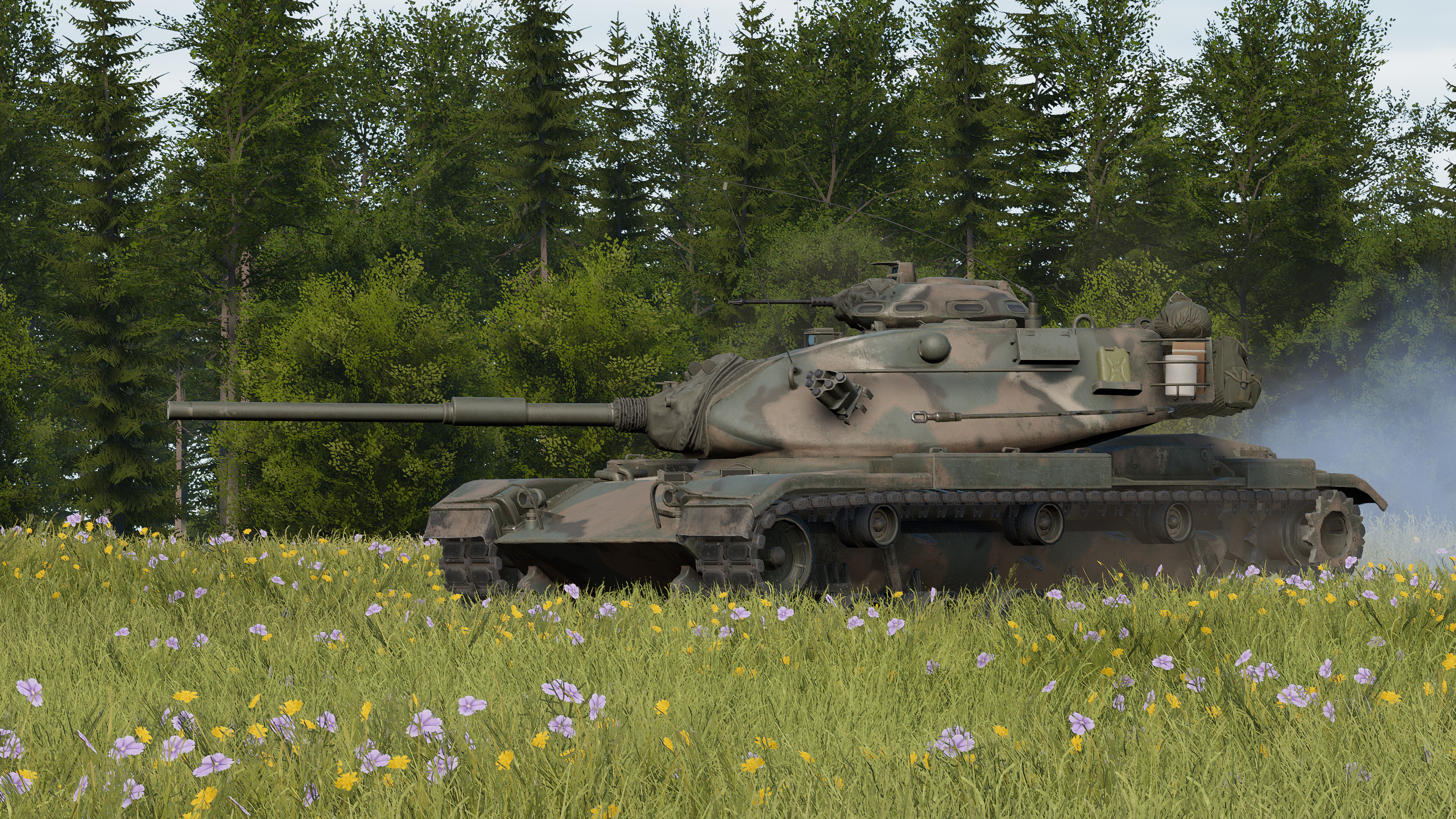Gunnery guide: M60A1 RISE (Passive)
The M60A1 RISE (Passive) is one of the many upgrades the M60 tank family went through during its long service history. The RISE package (Reliability Improved Selected Equipment) and the addition of a passive night vision system without need of an infrared searchlight (hence the "Passive" in the name) set this tank apart from the earlier M60A1 variants.
By the 1980s, even this upgraded equipment was woefully obsolete, with the tank's outdated rangefinding equipment and homogeneous armor relegating it to reserve status behind more capable vehicles like the M1 and M60A3 TTS. Nevertheless, the M60A1 could still pack a punch with updated ammunition, and in GHPC it serves the role of a "glass cannon" unit and a challenge for players to master.
Most characteristics of the M60A1 other than its optics and fire control system are identical to those of the M60A3, so if you'd like to read about the rest, check out the M60A3 TTS gunnery guide. For those curious, the visible external differences separating GHPC's M60A1 RISE (Passive) from the M60A3 TTS are the un-shrouded gun barrel, flat-topped gunsight "doghouse", lack of wind sensor mast, and ribbed road wheels.
Optical coincidence rangefinder
By far the most unique feature of the M60A1 RISE (Passive) is its rangefinding mechanism, which operates on the optical coincidence principle: matching or coinciding two images to create a triangulation that reveals the correct distance. The M60A1 RISE (Passive) uses a "ghost image" method, where both perspectives are superimposed on each other, and the range is correct when the target appears crisp and unified.
In GHPC, optical rangefinders are used with the same control input as the laser rangefinder. Pressing once will bring up the rangefinder view, and pressing again will hide it. Players must manually adjust the range setting (default: LCtrl + Mousewheel, or PgUp and PgDown) in order to manipulate the image until they are satisfied with the results.

Above: A target viewed through the rangefinder sight will appear to have a double image when the range is incorrect (left), or a crisp single image when the range is correct (right)
Limitations of the rangefinder
Due to the nature of coincidence rangefinding, the results are increasingly difficult to distinguish as the range to the target increases. The visible difference between a range setting of 2100 meters and a range setting of 2200 meters is easy to miss. In addition, the optical equipment in the "blisters" on the turret sides is only able to rotate a certain amount, so for very short ranges they are physically unable to focus on the distance specified by the range setting. Because of these limitations, the coincidence rangefinder is best used for targets between 500 meters and 2 km away.
Best practices for ranging
Even within the ideal span of distances, the optical rangefinder can be slow and clumsy to use. In a pitched battle, potentially against opponents with laser rangefinders and APFSDS rounds, this delay can be fatal. Therefore, a skilled player should use every opportunity to remove the need to perform tedious rangefinding in combat.
Battlesight range: Much like any other tank, the M60A1 RISE (Passive) can point-and-shoot within a certain distance to targets. For APFSDS ammunition, if a target is within 1200 meters, setting the weapon range to 1200 and aiming low on the target should be sufficient to score a hit of some kind. If the target is not destroyed, manual adjustments can be made for the follow-up shot.
Pre-ranging: Thoughtful use of the tactical map can clue a player in to where the enemy will likely appear next. Using the grid lines on the map (1 km squares), it should be possible to estimate a coarse range setting before even encountering the enemy. This will allow you to shoot first and have a reasonable chance of hitting the mark, even without taking the time to use the rangefinder. This technique works for any tank without a laser rangefinder, especially those with high-velocity rounds like APFSDS.
Night fighting
As thermal optics were not fitted to the M60 series until the M60A3 TTS, the M60A1 RISE (Passive) is disadvantaged compared to its counterparts in the US tank forces. However, it's nowhere near the worst night fighter in GHPC, having a capable passive night vision system that does not require assistance from an infrared searchlight and therefore does not give away the tank's position during use.

A major downside of the night sight is the fact that it does not include any view of the coincidence rangefinder system. The gunner must use alternative means of range estimation while employing the night sight. Alternatively, if illumination flares are available, the day sight and rangefinder may still be viable.

Above: With illumination flares active and the reticle illumination turned on (default key: i), the M60A1's day sight is still usable at night
A note on ammunition
Much like the M60A3 TTS, the M60A1 RISE (Passive) has a 105mm rifled cannon capable of firing the best rounds in the US Army's arsenal in GHPC's 1985 setting, including the rare M833 APFSDS-T round. Even the standard M774 dart will be sufficient against any target in the game with a good center-mass hit. The tank's performance may be hindered by its poorly aged armor protection and mobility, but its firepower is more than adequate.
Other variants
The M60 series includes many sub-variants, several of which are available in GHPC via the mission customizer and/or campaign. For reference, here is a chart showing the differences between them.
Conclusion
Despite being heavily outclassed in 1985, the M60A1 RISE (Passive) is a unique vehicle that's capable of dishing out heavy punishment in the hands of those dedicated enough to learn how to use it properly.
Thank you for reading, and we hope you enjoy playing Gunner, HEAT, PC!
